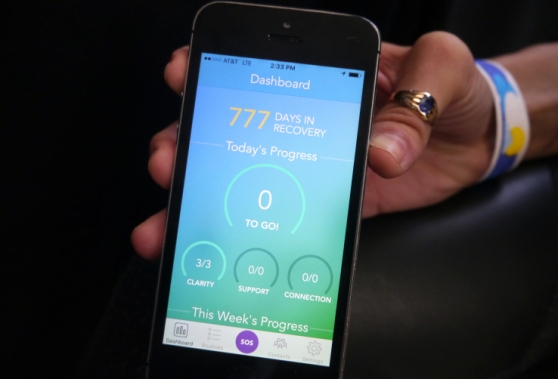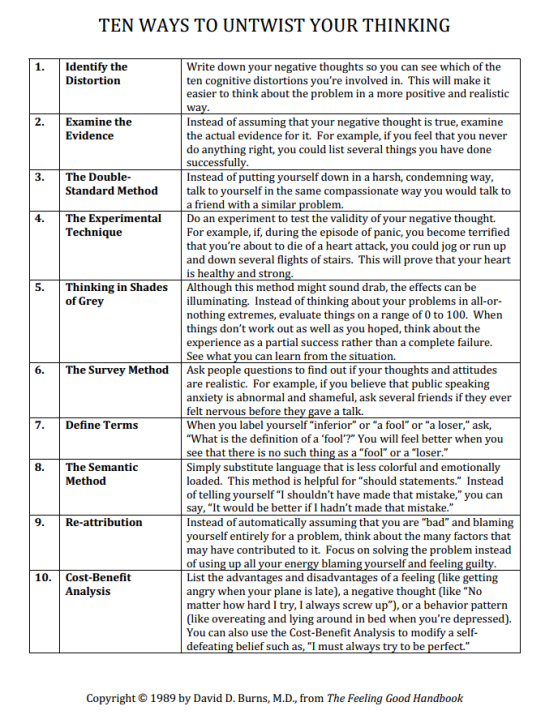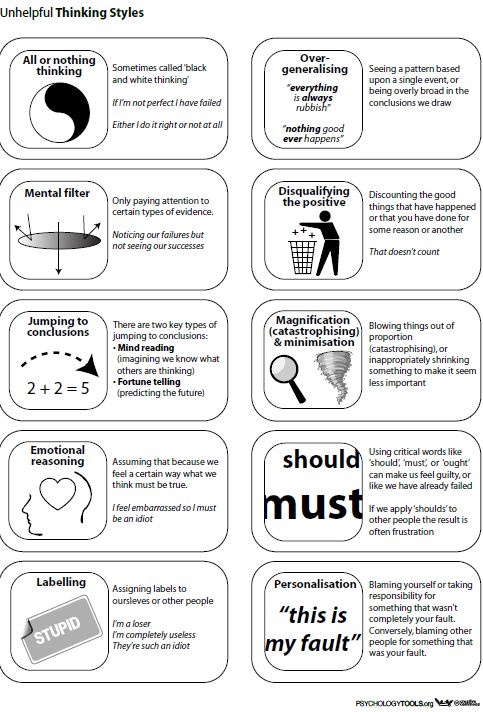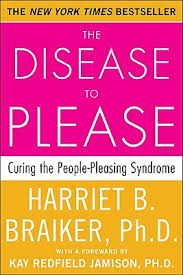https://techcrunch.com/2016/09/13/weconnect-is-an-app-to-support-addiction-recovery/
by Natasha Lomas (@riptari)

Keeping close, quantified track of personal progress is absolutely imperative for one group of people: recovering alcoholics and drug addicts. And it’s this often isolated segment of society that the startup behind the WeConnect app is aiming to help.
The team was chosen as today’s wildcard battlefield startup here at TechCrunch Disrupt SF 2016, plucked from silicon alley to present their product on stage. They also won theTechCrunch Seattle Meet-Up this summer.
Their app-based support platform includes context-sensitive notifications to encourage timely communication within support groups; a dashboard view that structures the user’s day with activities they view as beneficial to their wellbeing (such as prayer or meditation); and ongoing tracking of their personal progress at attending recovery program meetings — including using geofencing to determine they really attended a particular meeting and even how long they spent there.
It also includes an SOS button a user can press to send a message requesting specific pre-slected contacts get in touch — for moments when they’re feeling really low or in need of immediate support.
The startup behind WeConnect, which describes itself as a social purpose corporation, is using technology to try to combat the sense of isolation that can cause addicts to relapse, says co-founder Daniela Tudor.
Tudor, a former addict herself, came up with the idea for the app during her time in rehab after realizing she wanted a way to stay in contact with the people she met during her recovery program — and who helped her stay on track.
“There’s three components to recovery,” she explains, demoing the app. “One is communication. So adding your connections; the second is clarity — so that’s whatever activity you consider part of your recovery, that keeps you centered and a good connection in relation with yourself. The third party of the recovery, which is probably the most crucial, initially especially, is what your in person support routine is — so that’d include any of these 12-step or CBT cognitive behavioral therapy sessions.”
There’s also a rewards element built in to the app, with users able to earn things like coffee coupons and yoga lessons as they build progress towards their goals. She notes the team intentionally stayed away from loading too much gamification into the app to avoid making the technology itself potentially problematic.
“We give rewards that feedback into your recovery loop, like yoga, fitness classes, coffee coupons. We didn’t want to gamify it too much because we believe that triggers another addiction — which is technology. So we’re giving only activities out or rewards that feed the person’s soul or their connection to their community or their own recovery.”
Unlike other recovery or wellness apps she says WeConnect is private — pointing out there’s no way to search for other users on the app; it’s necessary to have a fellow user’s email and phone number in order to add them as a contact.
“They have to confirm that you want them as part of your network. We’re also HIPAA compliant,” she adds.
As well as helping former addicts to keep on track, the team is also providing data to the treatment providers who are working with them. They’re intending to monetize via this route in time, although their primary mission is a social one, to support as many addicts as possible, says Tudor.
“For the treatment providers the huge value adds that we are is obviously improving outcomes gets them more referrals. The other part is that we provide them valuable data. Insurance companies are starting to cover treatment less and less — they’re looking for actual data-centric tools that can measure the success rate of programs, and how effective the approach,” she says.
“The data’s out there that relapse rates are extremely high… It’s actually an opportunity for them to take that data and improve, and keep also centres and other providers accountable to a healthy treatment program that actually saves lives and reduces relapse,” she adds.
Tudor has been working on the app since 2014, meeting one of her co-founders at a Startup Weekend event.
The closed beta of WeConnect was launched this June — it’s currently being used by in-patient treatment/rehab centers in Arizona, Washington and California as the team gathers more data to be able to prove their app can reduce relapse rates. After that, they intend to make their pitch to insurance companies.
Beyond the initial focus on drug and alcohol addiction Tudor says they see potential to expand the support tech to address a broad spectrum of recovery needs, such as eating disorders and even people on domestic violence rehab programs.
They’ve raised a $525,000 seed round of funding thus far, from strategic investor Steve Moak of Benevolent Ventures — and are now looking to raise a $3 million Series A at a $15 million valuation.

Judges Q&A
Q: Have you tested this and do you have evidence of success and efficacy?
A: We just started our early adopter program but we’ve had clients that have been using the platform who’ve told us it has definitely improved their accountability and communication. And we also track data on a daily basis to see how much people are on the app, what they’re interacting with on there, and what they’re staying accountable to.
Q: One thing I was wondering is can individuals who use WeConnect find someone else to connect to on the app?
A: When they’re on-boarded they have to add a minimum of two connections… but that’s up to the individual to be empowered and create that accountability community around them.
Our app is very private so you’re not searchable. And we’re also HIPAA compliant so you create your own circle of accountability on there.
Q: I see why you’re going to treatment programs first. It is a smaller market but you have a better chance of having people fully engage with the product… But what use cases could you potentially just use parts of the product for? Is it an all or nothing thing? Or is there a partial way that still has value for a potentially larger market.
A: We’re planning to also go for eating disorders, domestic violence recovery, and create another standalone product for tech recovery. And then there is potentially even larger markets beyond that.
Q: The people who were facing these programs before you had this app, it was all paper and phone calls? Tell me more about that? And from your tests what is the most valuable feature people have said they found in the app?
A: When I walked out of treatment 28 days sober I had to get out of a bad relationship and go to meetings… all of that is extremely overwhelming… This creates a tight accountability and instant support network in your pocket… That’s how we’re solving that problem.
The second question, they’ve said there’s two things: one, just seeing their progress from the past week when they’re getting down on themselves has been rewarding. And then the rewards themselves, they’re motivating them to do more activities than they would do in the first place.
Q: Is it too early to tell or could it dramatically increase results in recovery?
A: Yes, that’s our goal.
Q: What’s the business model thinking?
A: Currently we’re in the early adopter program. That price point is $365 – so $1 a day for a 12 months subscription per patient that we provide to the patient treatment center. That’s just our early adopter program pricing because it’s new. So we’re going to determine a different pricing model after that. But b2b.
Q: So the treatment provider pays not the patient?
A: So it depends. Some treatment centers are footing the cost themselves and some of them are taking that cost and putting it within the aftercare plan that they have for their patient – which also includes outpatient and check ins and a couple of oher features. So it depends. It’s a personal choice for the treatment center. But we bill the treatment center.
Q: Do insurance companies or medicare cover addiction programs?
A: They do. And we were approached today by two insurance companies and they’re really excited about what we’re doing but again the reason we want to be patient first is to get that data to give a really robust presentation to insurance companies.
Q: What’s your specific advantage? The technology is not difficult right so anyone could potentially do the same thing. Is your advantage in your experience?
A: I come from tech but I’m also in recovery. And my business partner also came from that space but having relationships in the recovery community that are really important to have. He does strategic partnerships and we both have experience in this space… Not anybody can just do this.
















